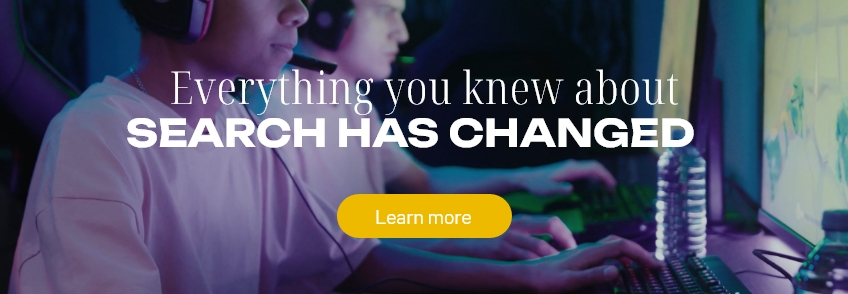The digital landscape is shifting once again, and this time, it’s bridging the gap between social and search in a big way.
From 10th July 2025, Google Search will begin indexing public posts from professional Instagram accounts. That means your business Reels, carousels and even captions could soon be showing up alongside blogs, news articles and product pages in Google search results.
It’s a move that marks a major change in how content is discovered online — and one that offers huge opportunities for brands ready to adapt.
So let’s explore what it means.

Why this matters
Until now, Instagram has largely remained a closed ecosystem. Content visibility was limited to users on the platform itself, unless repurposed elsewhere by the brand itself. But this update changes the game, by allowing Instagram content to surface in Google Search, your posts can now reach audiences far beyond just your followers.
It’s a shift that reflects how search is becoming increasingly visual and multi-channel. People aren’t just looking for information — they’re looking for inspiration, quick tips, short-form entertainment and real-world proof. And platforms like Instagram are uniquely placed to deliver exactly that. This also highlights the importance of our Everysearch™ approach, which is reshaping how companies navigate digital marketing to thrive in a competitive, fast-paced landscape brimming with opportunities.
Dan Fernandez, Director of Organic, said:
“While this is big news for Instagram-first creators, it’s the natural next step for SEO content targeting, and aligned to the changes we’ve seen from Google over the last 2-3 years.
The continued integration of social-first video and wider media formats in search should be welcomed and seen as exciting change. Customer-centric video content should be a key part of any brand’s content strategy, and this change from Google is another opportunity to get even more value out of those assets, and integrate SEO into wider brand strategy.”

What brands should do now
To make the most of this new visibility, brands need to stop treating social and search as separate strategies. Instead, it’s time to bring them together in a way that supports discovery, engagement, and conversion.
Here’s some guidance on how to do this:
Align your SEO and social teams
Your SEO strategy should now extend to Instagram. That means sharing keyword insights with your social team, identifying content opportunities based on search demand, and ensuring your brand is consistent across every touchpoint.
Optimise Instagram captions like mini blog posts
Captions are no longer just a space for hashtags and emojis. With Google indexing on the table, they should be treated like micro-articles: structured, relevant, and packed with keywords, without losing your tone of voice.
Focus on high-quality, keyword-rich content
Google rewards relevance and quality. So whether it’s a Reel or a carousel, every piece of Instagram content should be purposeful, visually strong, and textually rich. Think: “How would someone find this in a search?”
Create seamless journeys from search to scroll to sale
Once someone discovers your Instagram post via search, what next? Make sure your profile, links and calls to action are all working hard to move users along the journey, whether that’s learning more, making a purchase, or simply following for more.

The bigger picture: Search is becoming social
This isn’t just a technical update, it’s part of a much wider trend. People are searching differently, especially younger audiences. Platforms like Instagram and TikTok are fast becoming discovery engines in their own right. Now, with Google pulling that content into its results pages, the lines between search and social are blurring fast and will no doubt continue to do so.
Brands that want to stay visible need to think cross-channel. They need to plan with purpose. And they need to create content that doesn’t just perform on social, but resonates in search too.
This update is a clear signal: your Instagram content is now part of your broader digital presence. And the brands that embrace this shift, aligning their teams, refining their content, and thinking holistically, will be the ones who stay ahead.
Want to know how to prepare your content for this new era of visual and social search? Get in touch with us – we’d love to help.



